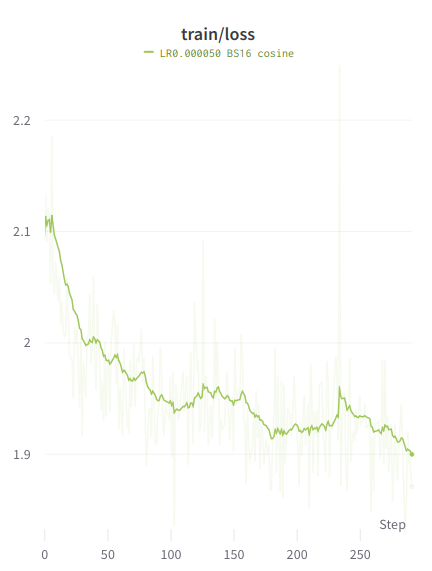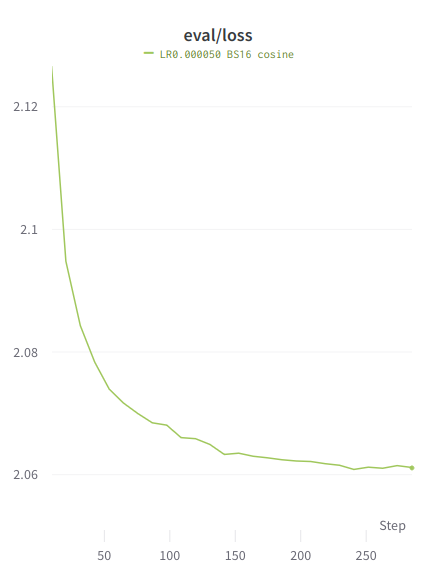|
--- |
|
license: apache-2.0 |
|
--- |
|
|
|
# AshhLimaRP-Mistral-7B (Alpaca, v1) |
|
|
|
This is a version of LimaRP with 2000 training samples _up to_ about 9k tokens length |
|
finetuned on [Ashhwriter-Mistral-7B](https://huggingface.co/lemonilia/Ashhwriter-Mistral-7B). |
|
|
|
LimaRP is a longform-oriented, novel-style roleplaying chat model intended to replicate the experience |
|
of 1-on-1 roleplay on Internet forums. Short-form, IRC/Discord-style RP (aka "Markdown format") |
|
is not supported. The model does not include instruction tuning, only manually picked and |
|
slightly edited RP conversations with persona and scenario data. |
|
|
|
Ashhwriter, the base, is a model entirely finetuned on human-written lewd stories. |
|
|
|
## Available versions |
|
- Float16 HF weights |
|
- LoRA Adapter ([adapter_config.json](https://huggingface.co/lemonilia/AshhLimaRP-Mistral-7B/resolve/main/adapter_config.json) and [adapter_model.bin](https://huggingface.co/lemonilia/AshhLimaRP-Mistral-7B/resolve/main/adapter_model.bin)) |
|
- [4bit AWQ](https://huggingface.co/lemonilia/AshhLimaRP-Mistral-7B/tree/main/AWQ) |
|
- [Q4_K_M GGUF](https://huggingface.co/lemonilia/AshhLimaRP-Mistral-7B/resolve/main/AshhLimaRP-Mistral-7B.Q4_K_M.gguf) |
|
- [Q6_K GGUF](https://huggingface.co/lemonilia/AshhLimaRP-Mistral-7B/resolve/main/AshhLimaRP-Mistral-7B.Q6_K.gguf) |
|
|
|
## Prompt format |
|
[Extended Alpaca format](https://github.com/tatsu-lab/stanford_alpaca), |
|
with `### Instruction:`, `### Input:` immediately preceding user inputs and `### Response:` |
|
immediately preceding model outputs. While Alpaca wasn't originally intended for multi-turn |
|
responses, in practice this is not a problem; the format follows a pattern already used by |
|
other models. |
|
|
|
``` |
|
### Instruction: |
|
Character's Persona: {bot character description} |
|
|
|
User's Persona: {user character description} |
|
|
|
Scenario: {what happens in the story} |
|
|
|
Play the role of Character. You must engage in a roleplaying chat with User below this line. Do not write dialogues and narration for User. |
|
|
|
### Input: |
|
User: {utterance} |
|
|
|
### Response: |
|
Character: {utterance} |
|
|
|
### Input |
|
User: {utterance} |
|
|
|
### Response: |
|
Character: {utterance} |
|
|
|
(etc.) |
|
``` |
|
|
|
You should: |
|
- Replace all text in curly braces (curly braces included) with your own text. |
|
- Replace `User` and `Character` with appropriate names. |
|
|
|
|
|
### Message length control |
|
Inspired by the previously named "Roleplay" preset in SillyTavern, with this |
|
version of LimaRP it is possible to append a length modifier to the response instruction |
|
sequence, like this: |
|
|
|
``` |
|
### Input |
|
User: {utterance} |
|
|
|
### Response: (length = medium) |
|
Character: {utterance} |
|
``` |
|
|
|
This has an immediately noticeable effect on bot responses. The lengths using during training are: |
|
`micro`, `tiny`, `short`, `medium`, `long`, `massive`, `huge`, `enormous`, `humongous`, `unlimited`. |
|
**The recommended starting length is medium**. Keep in mind that the AI can ramble or impersonate |
|
the user with very long messages. |
|
|
|
The length control effect is reproducible, but the messages will not necessarily follow |
|
lengths very precisely, rather follow certain ranges on average, as seen in this table |
|
with data from tests made with one reply at the beginning of the conversation: |
|
|
|
 |
|
|
|
Response length control appears to work well also deep into the conversation. **By omitting |
|
the modifier, the model will choose the most appropriate response length** (although it might |
|
not necessarily be what the user desires). |
|
|
|
## Suggested settings |
|
You can follow these instruction format settings in SillyTavern. Replace `medium` with |
|
your desired response length: |
|
|
|
 |
|
|
|
## Text generation settings |
|
These settings could be a good general starting point: |
|
|
|
- TFS = 0.90 |
|
- Temperature = 0.70 |
|
- Repetition penalty = ~1.11 |
|
- Repetition penalty range = ~2048 |
|
- top-k = 0 (disabled) |
|
- top-p = 1 (disabled) |
|
|
|
## Training procedure |
|
[Axolotl](https://github.com/OpenAccess-AI-Collective/axolotl) was used for training |
|
on 2x NVidia A40 GPUs. |
|
|
|
The A40 GPUs have been graciously provided by [Arc Compute](https://www.arccompute.io/). |
|
|
|
### Training hyperparameters |
|
A lower learning rate than usual was employed. Due to an unforeseen issue the training |
|
was cut short and as a result 3 epochs were trained instead of the planned 4. Using 2 GPUs, |
|
the effective global batch size would have been 16. |
|
|
|
Training was continued from the most recent LoRA adapter from Ashhwriter, using the same |
|
LoRA R and LoRA alpha. |
|
|
|
- lora_model_dir: /home/anon/bin/axolotl/OUT_mistral-stories/checkpoint-6000/ |
|
- learning_rate: 0.00005 |
|
- lr_scheduler: cosine |
|
- noisy_embedding_alpha: 3.5 |
|
- num_epochs: 4 |
|
- sequence_len: 8750 |
|
- lora_r: 256 |
|
- lora_alpha: 16 |
|
- lora_dropout: 0.05 |
|
- lora_target_linear: True |
|
- bf16: True |
|
- fp16: false |
|
- tf32: True |
|
- load_in_8bit: True |
|
- adapter: lora |
|
- micro_batch_size: 2 |
|
- optimizer: adamw_bnb_8bit |
|
- warmup_steps: 10 |
|
- optimizer: adamw_torch |
|
- flash_attention: true |
|
- sample_packing: true |
|
- pad_to_sequence_len: true |
|
|
|
|
|
### Loss graphs |
|
Values are higher than typical because the training is performed on the entire |
|
sample, similar to unsupervised finetuning. |
|
|
|
#### Train loss |
|
 |
|
|
|
#### Eval loss |
|
 |